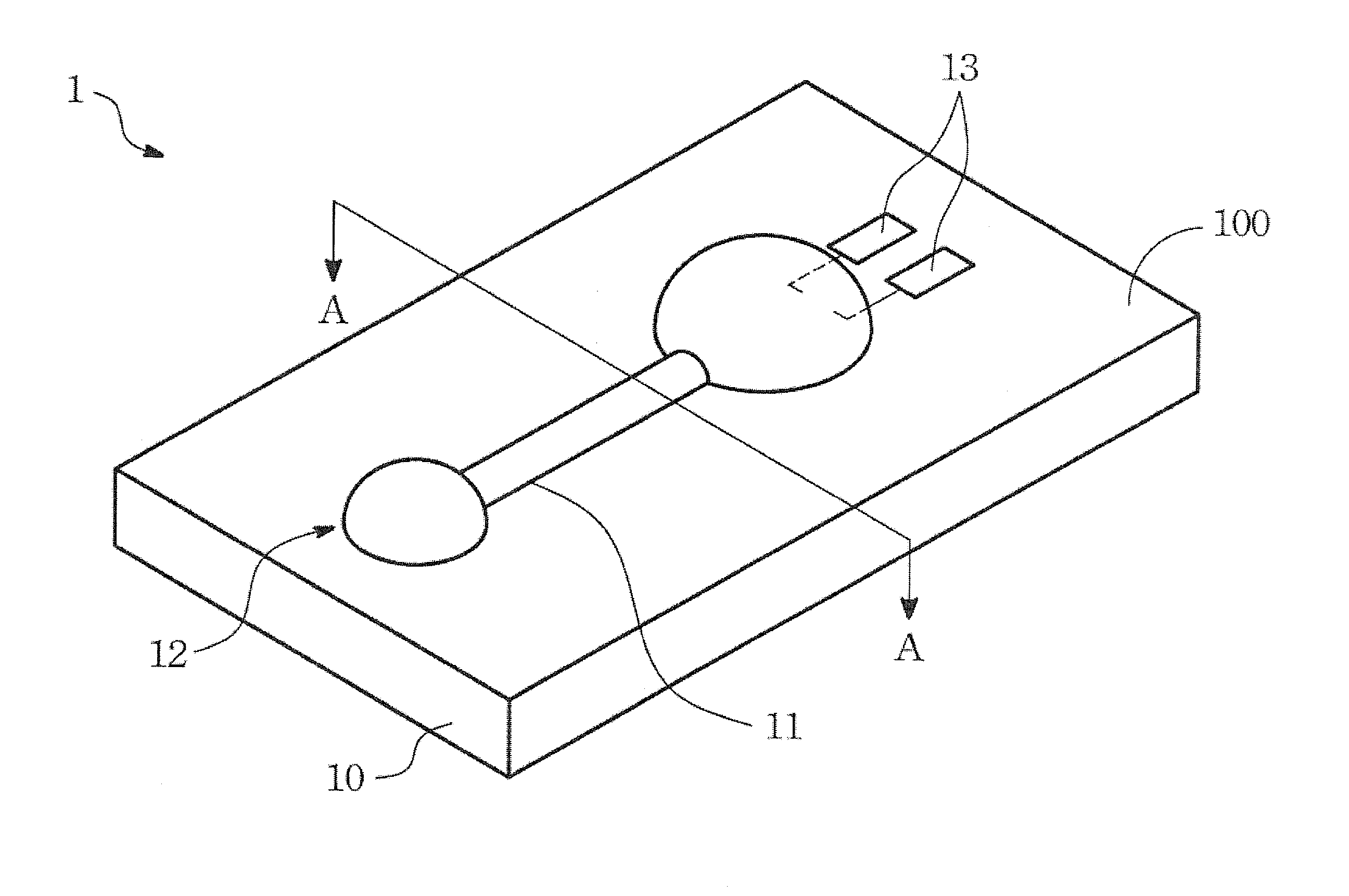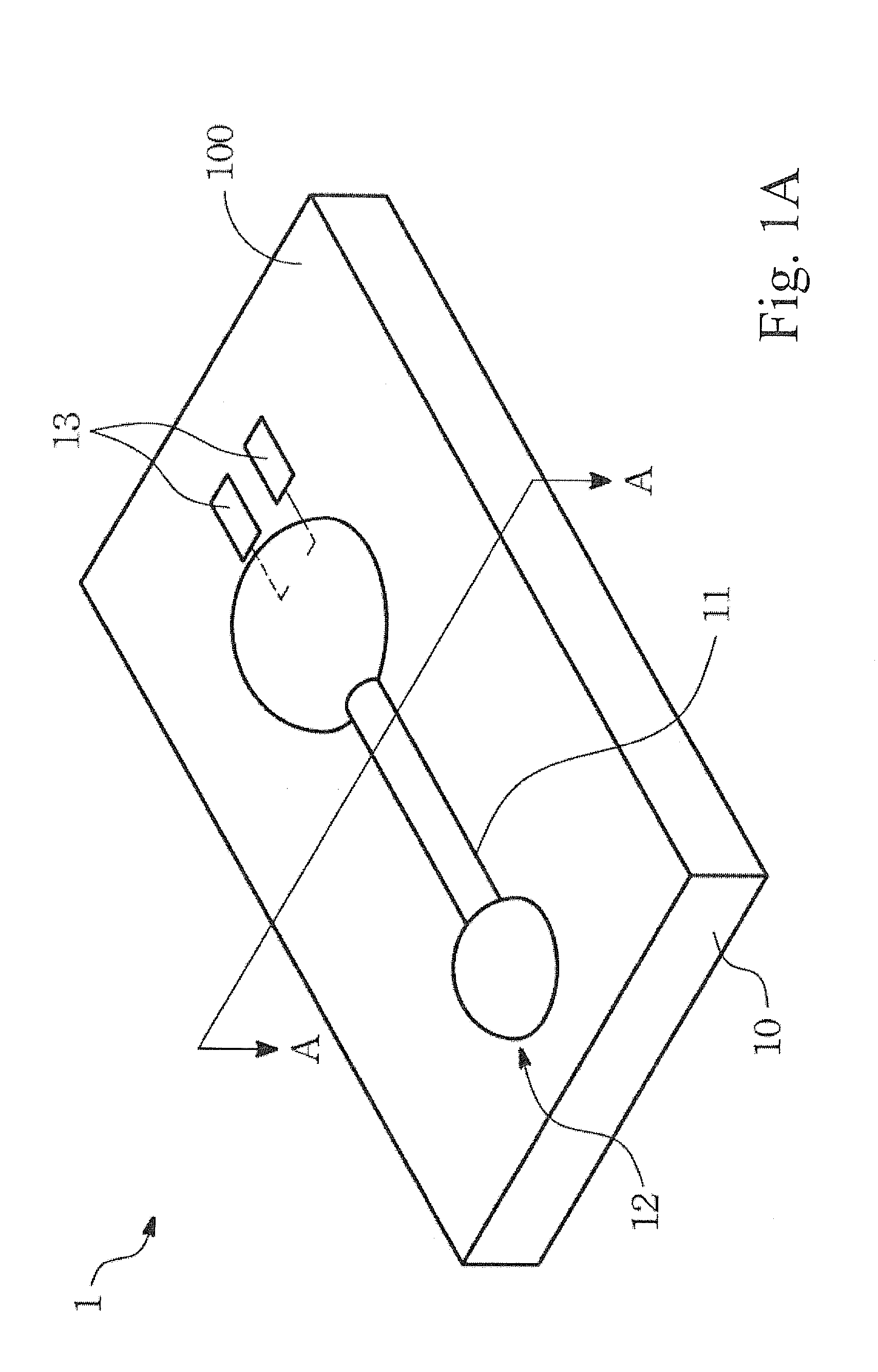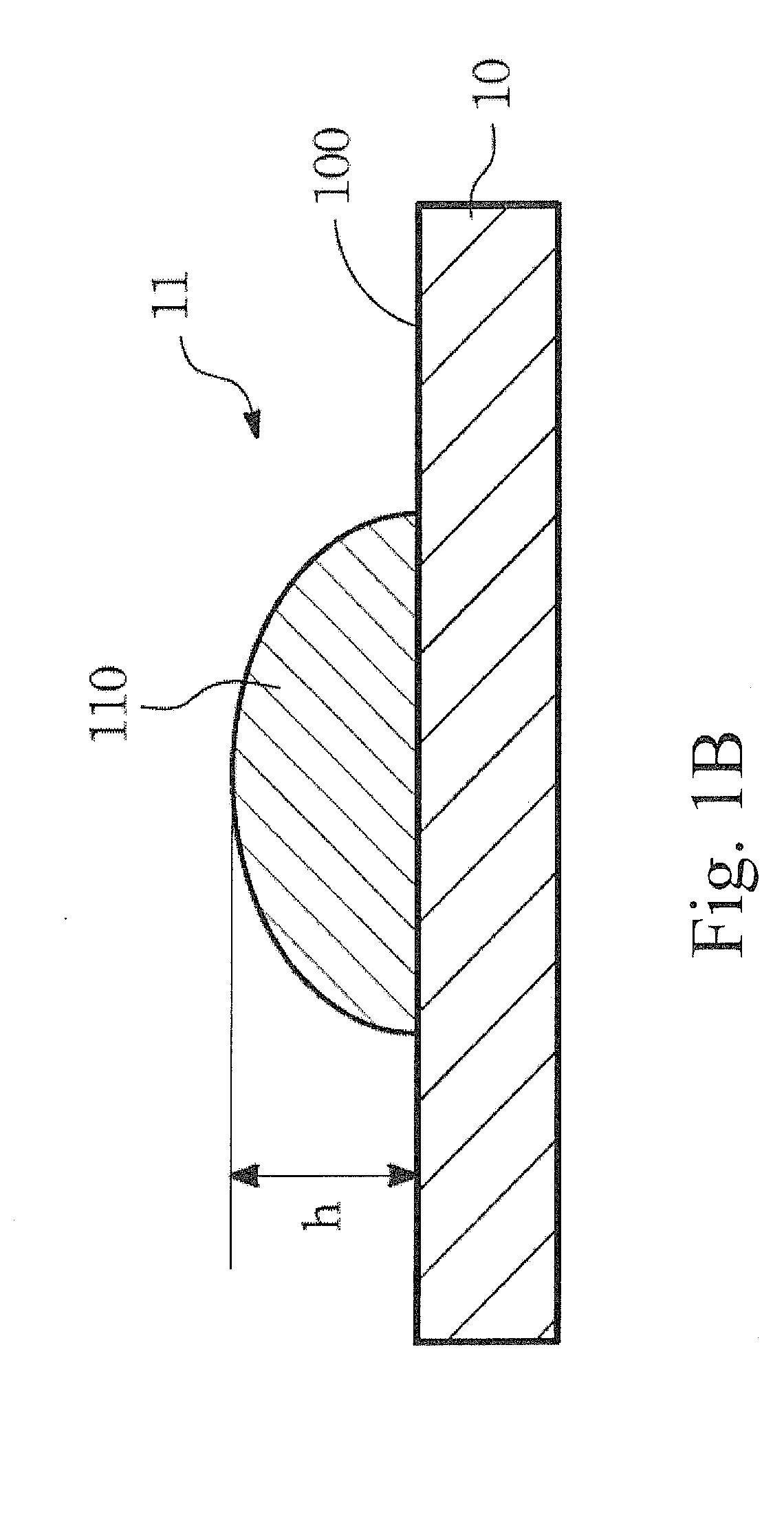Analytical strip and the manufacturing method thereof
a technology of analytical strips and manufacturing methods, applied in the field of analytical strips, can solve the problems of fluid sample waste, fluid sample waste, and inability to fully react to the surface of the channel, and achieve the effects of low residual sample volume, constant volumetric absorption capacity, and low residual sample volum
- Summary
- Abstract
- Description
- Claims
- Application Information
AI Technical Summary
Benefits of technology
Problems solved by technology
Method used
Image
Examples
first embodiment
[0023]Please refer to FIG. 1A for an analytical strip according to the present invention. The analytical strip 1 includes a substrate 10 and a channel structure 11. The substrate 10 has a flat surface 100, and the channel 11 is formed on the flat surface 100 of the substrate 10 according to a predetermined pattern 12. The surface of the channel 11 is not lower than the flat surface 100 of the substrate 10. In addition, the channel 11 has a hollow-matrix conformation and the channel 11 is more hydrophilic than the flat surface 100 of the substrate 10 is. For making the channel 11, a high-hydrophilic solution is applied to the flat surface 100 of the substrate 10 by means of lithographic printing, photogravure, anastatic printing, screen-printing, line marking, inkjet / spray, casting, or dipping.
[0024]The solution that is applied to the flat surface 100 of the substrate 10 may contains nitrocellulose or fiberglass, so that after dried and solidified the channel 11 is formed with porous...
third embodiment
[0042]The third preferred embodiment of the present relates to an alternative manufacturing method of the analytical strip. Please refer to FIGS. 3A and 3B. FIG. 3A is a flow chart of the manufacturing method of the present invention. FIG. 3B shows the analytical strip in the process of the manufacturing method of the present embodiment.
[0043]The manufacturing method of the analytical strip of the present embodiment primarily comprises the following steps:
[0044]Step 31: Firstly providing a substrate 30 that has a flat surface 300.
[0045]Step 32: Providing a mask 33 that is engraved with a predetermined pattern 32.
[0046]Step 33: Adhering the mask 33 detachably to the substrate 30.
[0047]Step 34: Providing a solution and fill the engraved predetermined pattern 32 with the solution.
[0048]Step 35: Drying the solution filled in the predetermined pattern 32.
[0049]Step 36: Removing the mask 33 to form a channel 31 that has the predetermined pattern 32. The surface of the dried channel 31 is ...
PUM
 Login to View More
Login to View More Abstract
Description
Claims
Application Information
 Login to View More
Login to View More - R&D
- Intellectual Property
- Life Sciences
- Materials
- Tech Scout
- Unparalleled Data Quality
- Higher Quality Content
- 60% Fewer Hallucinations
Browse by: Latest US Patents, China's latest patents, Technical Efficacy Thesaurus, Application Domain, Technology Topic, Popular Technical Reports.
© 2025 PatSnap. All rights reserved.Legal|Privacy policy|Modern Slavery Act Transparency Statement|Sitemap|About US| Contact US: help@patsnap.com



